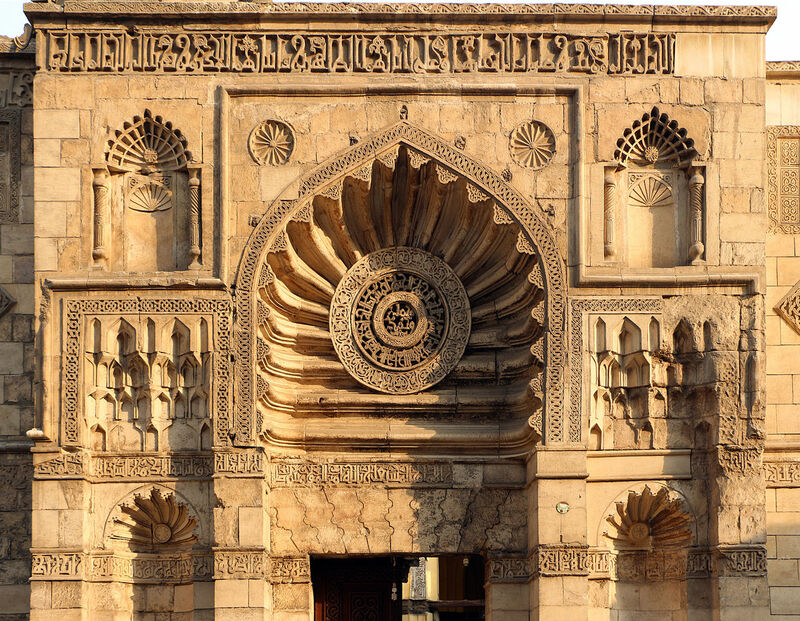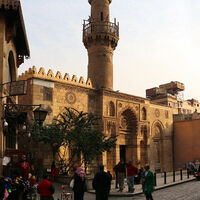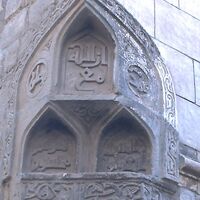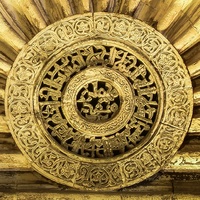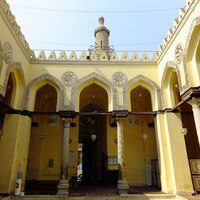Al-Aqmar Mosque, Cairo
Type:
Mosques,
Palace complexes
Date:
1125
Location or Findspot (Modern-Day Country):
Egypt
Medium:
Stone
Description:
The mosque of al-Aqmar was built on Cairo's main ceremonial avenue by the Fatimid vizier al-Ma'mun in 1125/6 (the minaret visible today is a late fourteenth-century addition). By this time, the vizier was more important than the ruler of the shrinking Fatimid caliphate. The small mosque was inside the Fatimid palace and meant to be used by its inhabitants.
The mosque has a traditional courtyard and hypostyle plan, using spolia columns and capitals, except that the facade followed the street while maintaining the qibla direction on the interior. This innovation was copied in many later Sunni mosques in Cairo. Al-Aqmar's elaborately sculpted facade also established new trends, starting with the continuous inscription band in floriated Kufic across the top. This names the vizier and the caliph and wishes the latter a victory over "the infidels" (Christians); the Fatimids had lost Tyre the previous year. The fluted hood of the keel-shaped arch above the main door houses an intricate openwork medallion that names 'Ali and Muhammad, encircled by an inscription from Qur'an sura 33 that refers to "people of the house." With other inscriptions on the facade, this had specific Shi'i connotations that proclaimed the Fatimids' legitimate descent from the Prophet's daughter Fatima and her husband, 'Ali.
The mosque has a traditional courtyard and hypostyle plan, using spolia columns and capitals, except that the facade followed the street while maintaining the qibla direction on the interior. This innovation was copied in many later Sunni mosques in Cairo. Al-Aqmar's elaborately sculpted facade also established new trends, starting with the continuous inscription band in floriated Kufic across the top. This names the vizier and the caliph and wishes the latter a victory over "the infidels" (Christians); the Fatimids had lost Tyre the previous year. The fluted hood of the keel-shaped arch above the main door houses an intricate openwork medallion that names 'Ali and Muhammad, encircled by an inscription from Qur'an sura 33 that refers to "people of the house." With other inscriptions on the facade, this had specific Shi'i connotations that proclaimed the Fatimids' legitimate descent from the Prophet's daughter Fatima and her husband, 'Ali.
Relevant Textbook Chapter(s):
7
Repository and Online Resources:
• Read more about al-Aqmar (and see a plan) on the ArchNet website.
• See a 16-minute video about the mosque by Dr. Jennifer Pruitt on Khamseen: Islamic Art History Online.
Image Credits:
Wikimedia Commons
